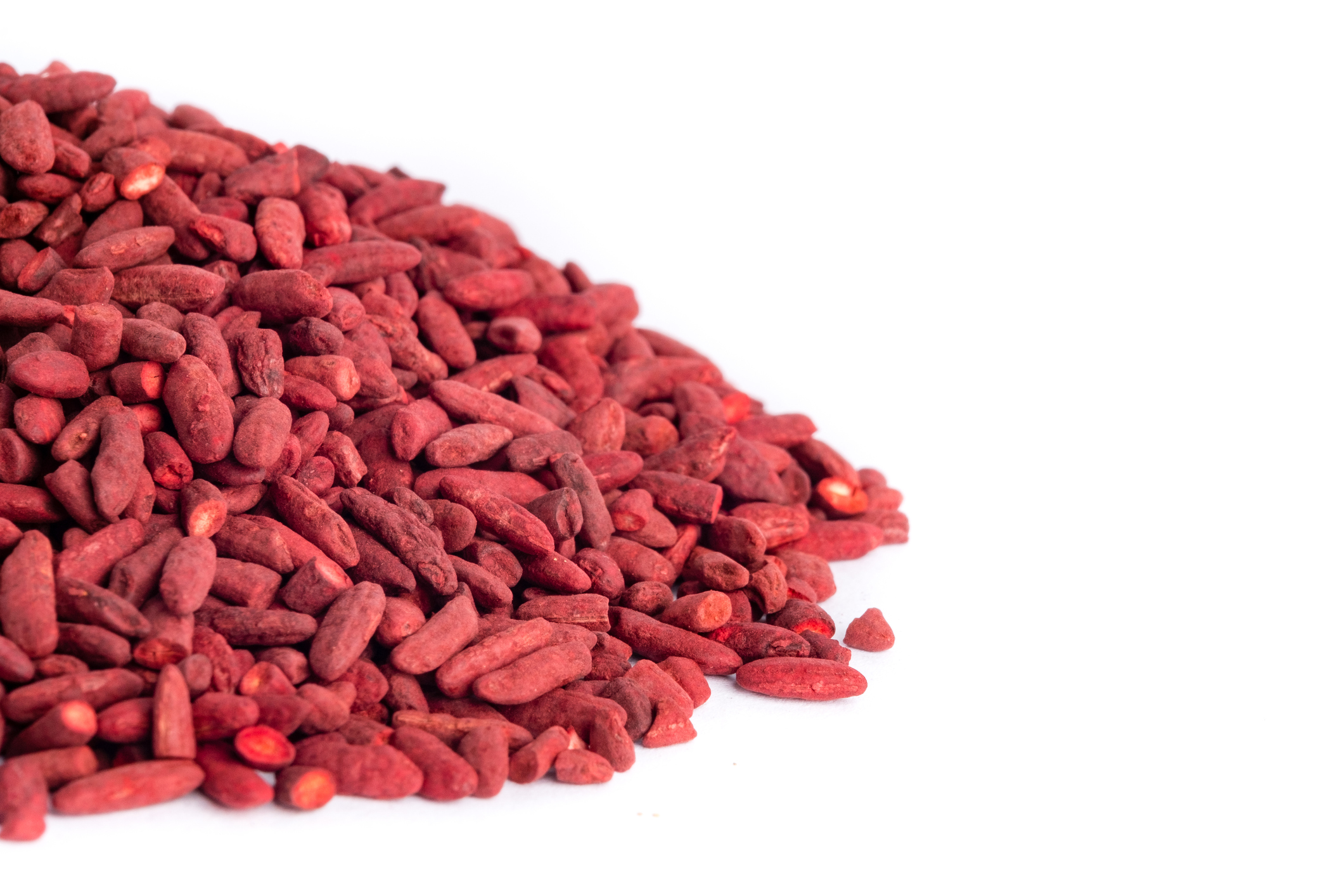Red yeast rice has been shown to decrease blood cholesterol values by 20-30% with better tolerance than statins. It is therefore an important tool for the prevention of cardiovascular diseases.
Garlic can also help lower cholesterol values by around 10%. In addition, its antioxidant, hypotensive, antiplatelet and fibrinolytic effect is useful for decreasing the formation of atheroma plaque and reducing the risk of cardiovascular events.
Dr. Francisco Martínez Peñalver – Neolife Medical Team
The proven efficacy of red rice yeast has led it to become a commonly-used therapeutic weapon.
The use of red rice yeast is particularly prominent in the area of hypercholesterolemia supplementation. There have been numerous studies, but one in particular published in 1999 in the American Journal of Clinical Nutrition demonstrates the effectiveness of this supplement when controlling all parameters of the lipid profile without causing a decrease of c-HDL (1), the so-called “good cholesterol”.
The proven efficacy of this molecule has led it to become a therapeutic weapon commonly used in patients intolerant to statins for whatever reason (allergy, myositis, non-specific allergies, etc.). It is a safe remedy in these patients since the undesirable effects that appear with the use of statins do not appear with this supplement (2).

Monocholine is a hypercholesterolemia substance obtained from the Monascus bacteria family (3). When added to red rice yeast both lipid effects are enhanced, and all the fractions of the lipid profile are diminished except, again, those of c-HDL.
The addition of the coenzyme Q10 (CoQ10) and Monocholine to red rice yeast has been especially useful in patients with metabolic syndrome. A very recently published study looked at the effects on this type of patient and saw improvements, not only in their lipid profile but in their tension figures and glycemic profile (4), making it, not surprisingly, a reliable and safe option for the virtual absence of undesirable effects.
Another field in which the nutraceutical (in this case red rice yeast together with the Monocholine) has a great deal of predicament is primary prevention in healthy patients with low cardiovascular risk. In these cases the addition of preventive medication can generate controversy, so it is perhaps more appropriate to supplement with compounds that have good safety profiles and certified efficacy (5).
The beneficial effects of CoQ10 at the cardiovascular level are well documented. Perhaps the best review of these effects was done in 2016 in a study that showed how supplementation with this compound improved the reactivity of vascular endothelium and c-LDL numbers.
Another compound of Neoactives Neocholesterol Control is garlic extract. Its beneficial effect on the oxidation of lipoproteins has been known for over 25 years, as has its protective effect on the formation of plaque along with an antithrombotic effect thanks to its power to stimulate fibrinolysis (7). Recently a new review was published showing how garlic extract, in appropriate doses (8), improved the cardiovascular profile of patients, mainly affecting lipid and blood pressure profiles.
As for olive extract, according to the EFSA (European Food Safety Authority), the daily consumption of 5 mg hydroxytyrosol (olive extract) and its derivatives has a protective effect on elevated levels of c-LDL and its possible oxidation and aids in the formation of atherosclerotic plaque (9). This oxidative action is also exerted by another compound of olive extract: oleuropein. The latter, in addition to its hypolipidemic effect, is especially active in the antioxidation of the LDL fraction of cholesterol and in turn activates other antioxidant agents, obstructing the adverse effects of this process. (10). These agents rich in phenols that are extracted from olive leaves have shown, likewise, to have some beneficial effect on the pattern of blood pressure, therefore making it an appropriate option in patients with multiple simultaneous cardiovascular risk factors (11) .
BIBLIOGRAPHY
(1) Heber D et al. Cholesterol-lowering effects of a proprietary Chinese red-yeast rice dietary supplement. Am J Clin Nutr. 1999 Feb;69(2):231-6.
(2) Venero CV et al. Lipid-lowering efficacy of red yeast rice in a population intolerant to statins. Am J Cardiol. 2010 Mar 1;105(5):664-666.
(3) Huang CF et al. Efficacy of Monascus purpureus went rice on lowering lipid ratios in hypercholesterolemic patients. Eur J Cardiovasc Prev Rehabil. 2007 Jun;14(3):438-440.
(4) Mazza A et al. Effect of Monacolin K and CoQ10 supplementation in hypertensive and hypercholesterolemic subjects with metabolic syndrome. Biomed Pharmacother. 2018 Sep;105:992-996.
(5) Mazza A et al. The short-term supplementation of Monacolin K improves the lipid and metabolic patterns of hypertensive and hypercholesterolemic subjects at low cardiovascular risk. Food Funct. 2018 Jul 17;9(7):3845-3852.
(6) Cicero AF et al. Middle-Term dietary supplementation with red yeast rice plus coenzyme Q10 improves lipid pattern, endothelial reactivity and arterial stiffness in moderately hypercholesterolemic subjects. Ann Nutr Metab. 2016;68(3):213-9.
(7) Kiesewetter et al. Effects of garlic on blood fluidity and fibrinolytic activity: a randomized, placebo controlled, double blind study. Br J Clin Pract Suppl. 1990 Aug;69:24-9.
(8) Kwak JS et al. Garlic powder intake and cardiovascular risk factors: a meta-analysis of randomized controlled clinical trials. Nutr Res Pract. 2014 Dec;8(6):644-654.
(9) EFSA Journal 2011;9(4):2033
(10) Jemai H et al. Hypolipidimic and antioxidant activities of oleuropein and its hydrolysis derivate-rich extracts from Chemlali olive leaves. Chem Biol Interact. 2008 Nov 25;176(2-3):88-98.
(11) Lockyer s et al. Impact of phenolic rich olive leaf extract on blood pressure, plasma lipids and inflammatory markers: a randomized controlled trial. Eur J Nutr. 2017 Jun;56(4):1421-1432.
